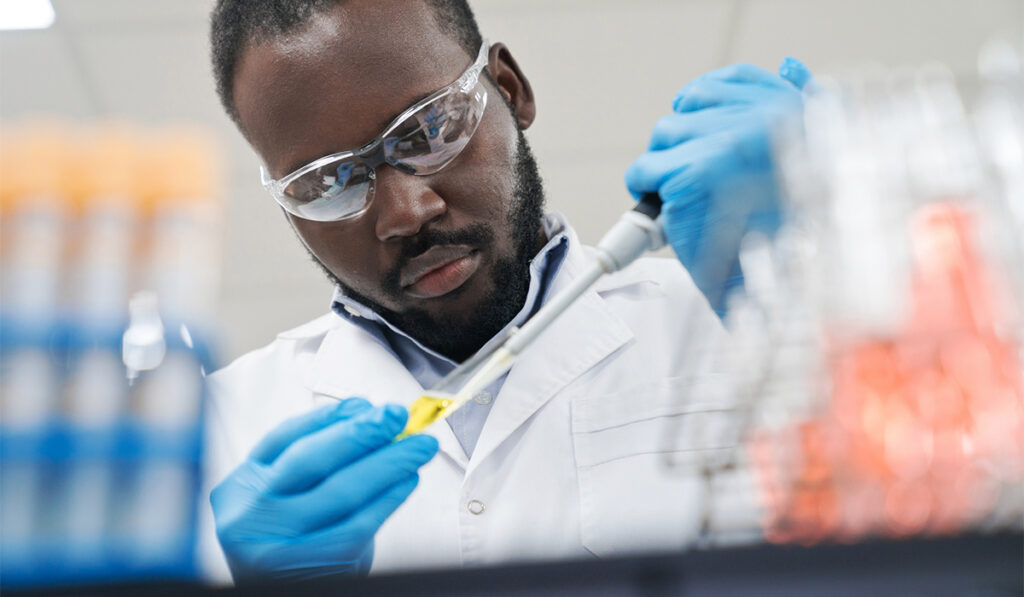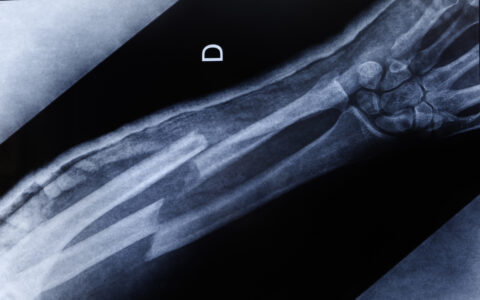Germline mutations in SAMD9 often cause bone marrow abnormalities such as myelodysplasia (MDS), but also severe multisystem syndromes.
One such syndrome, called MIRAGE, involves five conditions: MDS, infection, restricted growth, adrenal hypoplasia, an aberrant genital phenotype, and enteropathy.
In July 2024, pediatric hematologist and oncologist Jason Schwartz, M.D., Ph.D. of Vanderbilt University Medical Center, completed research that elucidates the effects of SAMD9 overexpression in a SAMD9 wild type and mutant human cell line.The team’s research determined how this overexpression results in cell cycle arrest and points the way to targets for rescuing transcriptomic changes that might lead to better projections for health outcomes.
“We will impact myelodysplasia only by understanding the various downstream effects of this mutation and what might be safely manipulated to counter the effects of mutant SAMD9,” Schwartz said.
SAMD9 and its Protein
SAMD9 is an interferon-induced viral restriction factor important in the innate immune response. The mechanisms by which mutant SAMD9 leads to bone marrow failure and MDS are unclear, although recent studies, including those from the Schwartz Lab, show that SAMD9 acts as an RNA-binding protein.
In Experimental Hematology, Schwartz’s team showed that SAMD9 overexpression, particularly mutant overexpression, negatively impacts ribosome biogenesis and MYC signaling. MYC signaling is important in regulating transcription, translation, cell proliferation, and apoptosis.
Researchers have previously shown that SAMD9 acts as an anticodon nuclease specific for the phenylalanine tRNA. Schwartz’s team found that this overexpression can partially rescue the effects of SAMD9 mutations, suggesting that there may be additional functions of SAMD9 outside of its anticodon nuclease activity.
Isolated SAMD9 Study
Schwartz determined the biological functions of wild type and mutant SAMD9 using a targeted overexpression model system. Specifically, his team’s task was to learn what signaling pathways underlie the SAMD9 mutation-related effects on cell proliferation, cell-cycle progression and global protein translation.
Using an inducible system with RNA sequencing in a myeloid cell line, they examined the global transcriptomic responses to isolated SAMD9 overexpression – without the customary use of interferon to trigger SAMD9 induction.
“Interferon can cause a whole host of other gene expression changes. So, I was interested in trying to isolate SAMD9 to learn downstream effects of SAMD9 expression in the absence of interferon,” Schwartz said.
“Interferon can cause a whole host of other gene expression changes. So, I was interested in trying to isolate SAMD9 to learn downstream effects of SAMD9 expression in the absence of interferon.”
The findings show that targeted SAMD9 overexpression significantly impacts central regulatory programs and that these phenotypes are more exaggerated when a SAMD9 mutation is present, the researcher said.
“Interestingly, we also found that MYC signaling is one of the most significantly impacted pathways when SAMD9 is overexpressed, negatively impacting expression of MYC and its downstream targets.”
Confounder to Treatment
A confounding feature of the SAMD9 mutation is that some patients develop an adaptation that enables them to recover function by duplicating the healthy allele and repopulating bone marrow. Thus, treatment may not be necessary.
“These patients don’t need treatment for the bone marrow at all but knowing which of them will recover and when remains the puzzle,” Schwartz said.
“Plus, this spontaneous resolution only fixes the marrow, but not the other syndromic characteristics like genital phenotypes and the consequences of adrenal hypoplasia. It also won’t prevent that patient from potentially passing the mutation on to their offspring.”
Another question ripe for study is why some people have the SAMD9 mutation without an obvious family history or clinical symptoms.
“Answering this question could potentially spotlight protective mechanisms that we could reproduce,” Schwartz said.




